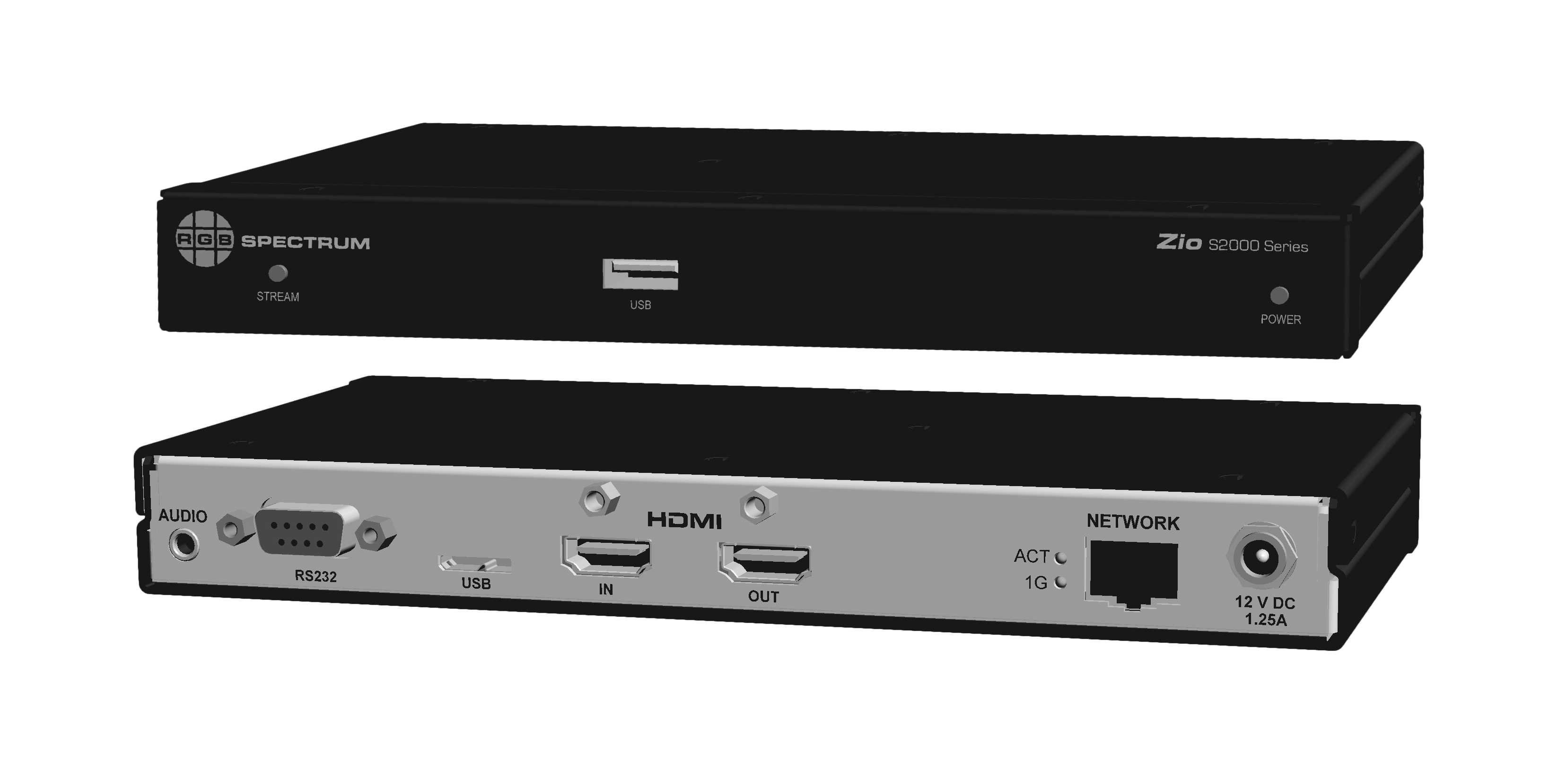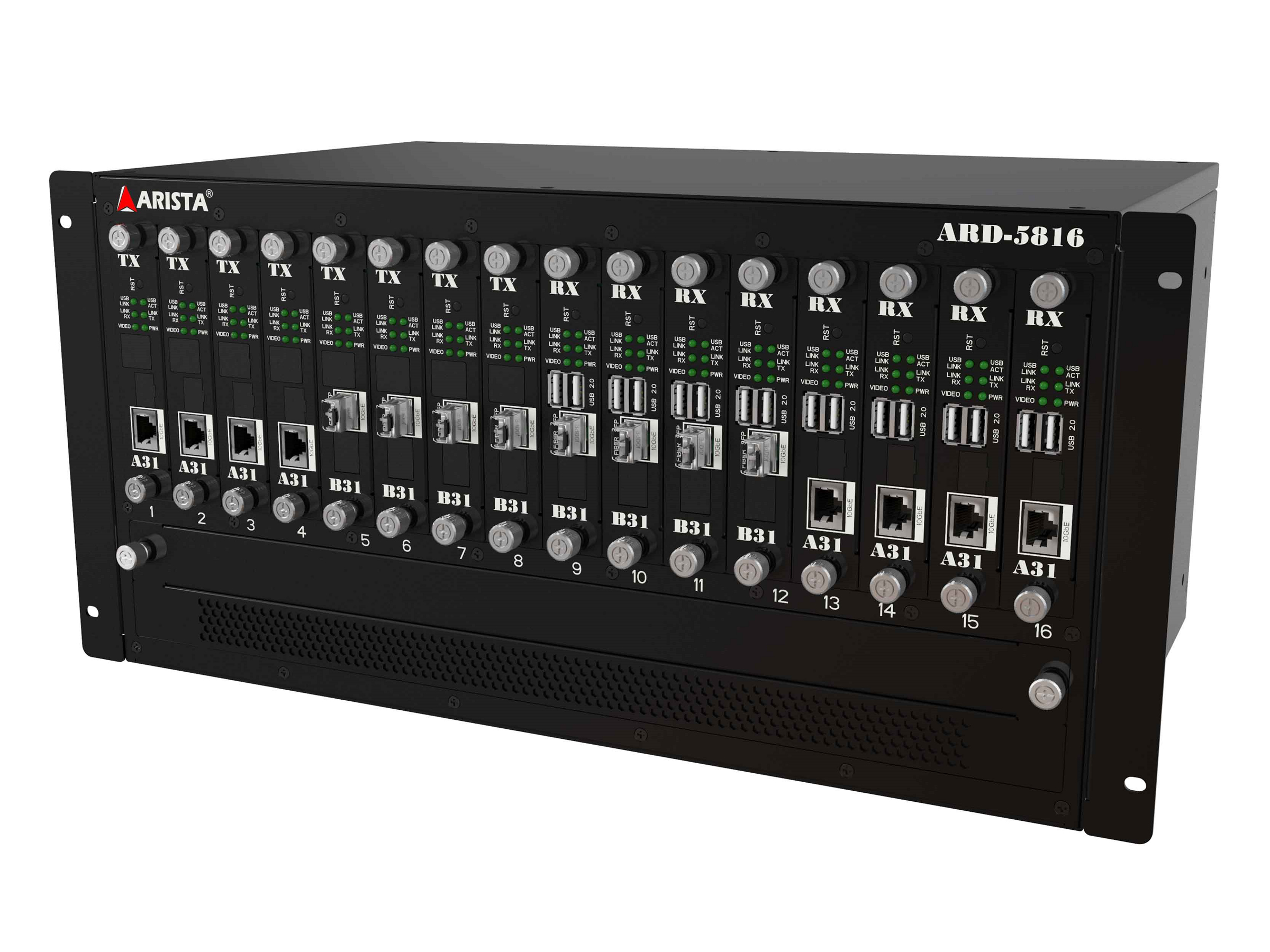AV Signal Distribution Update

When it comes to delivering AV signals from multiple sources over long distances to multiple video displays, the traditional matrix switcher has evolved to accommodate 4K HDR, HDMI, and HDCP 2.2 content protection. Manufacturers in this category are finding new ways to enhance the traditional capabilities of the matrix switcher, while also offering alternatives in the form of AV-over-IP solutions, and even blended technologies that allow for a gradual transition from one technology to another.
While RGB Spectrum still provides traditional, rack-based matrix switcher solutions, director of product marketing John Henkel said that customers across all verticals have been looking for ways to bring together a variety of distributed sources and then switch them to single or multiple different outputs that could also be distributed far away from the switch. So, to complement its HDBaseT and fiber solutions, the company introduced the Zio AV-over-IP ecosystem—a network-based matrix switcher “and then some,” according to Henkel.
The encoders in the Zio system can be placed at each source, wherever they are located, while decoders or multiviewers can be placed directly at the display. The user interface can be accessed via any web browser, allowing the operator to be located anywhere and have full access to the entire Zio system.
To meet the needs of today’s geographically dispersed AV networks, Zio products can be scaled up by adding encoders or decoders to the network, as needed.
“Zio products are based on a peer-to-peer architecture that provides near infinite scalability,” Henkel said. “And, unlike other networked AV systems that require the additional expense of a dedicated server, Zio’s peer-to-peer architecture is server-less, saving money, and reducing points of failure.”

The Zio user interface is web-based so any web browser can log in, and depending on their assigned access privileges, administer the system from anywhere. “We provide thumbnails of all the Zio-encoded sources so the operator knows right away what source they want to route and what is currently routed to a destination,” Henkel explained.
For those who are apprehensive about switching over their entire system to a new AV-over-IP solution, RGB Spectrum also offers a complete line of networked AV products that can be added to any system as needed to bring in distant sources or switch to a display that is across the network. These can be used with existing matrix switchers and other equipment or can operate as a wholly contained matrix switching solution.
A daily selection of the top stories for AV integrators, resellers and consultants. Sign up below.
Extron Electronics has released the DXP HD 4K PLUS Series to meet the ever-increasing demand for a matrix switcher with 4K/60 video distribution capability and support for the latest HDCP 2.2 content protection standard. Another main driving factor for the development of this new lineup was the HDMI 2.0b specification, which includes data rates up to 18Gbps, HDR, and Deep Color up to 12-bit.
Extron Electronics director of product marketing Joe da Silva explains that an audio de-embedding feature in the switcher also assures that system designers won’t need to add “another box” to the system and that the hurdles of onsite setup and commissioning have been significantly minimized by Extron’s Product Configuration Software.
For classrooms, training rooms, divisible rooms, and command and control centers, 8x8, 8x4, and 4x4 options provide contractors with more flexibility in designing their systems. “This series also provides automatic input cable equalization, allowing for longer cable runs and even further flexibility in installations,” da Silva said. “Additionally, as many systems turn toward energy-efficient designs, our lineup provides contractors with new power save modes that can prove beneficial and attractive for these special projects.”
Atlona’s three new matrix switchers—the Opus Series of 4K HDR HDMI to HDBaseT Matrix Switchers and the Opus receiver for 4K HDR HDMI over 100-meter HDBaseT transmission—are offered in 4x6, 6x8, and 8x10 configurations, each equipped with a comprehensive host of audio and control system integration features. The compatible OPUS-RX receives HDMI, Ethernet pass-through, and bidirectional IR and RS-232 control signals up to 330 feet (100 meters) over Cat-6a/7 cable.

Atlona’s director of marketing Garth Lobban noted that while HDBaseT is a robust and well-known method for extending HDMI signals over Cat-6a/7 cable, it has a data rate limitation of 10.2Gbps, significantly below the required 18Gbps data rate in the HDMI 2.0 specification. To accommodate the challenge of these higher HDMI data rates, Atlona utilized what it says is visually lossless VESA Display Stream Compression (DSC), enabling HDR and 4K60 4:4:4 signal extension over HDBaseT with zero frames of latency.
Additionally, Lobban pointed out that customers who had installed Atlona’s previous generation of matrix switchers told the company that they needed more audio matrixing capability. That led product designers to build in a full, independent audio matrix with both TOSLINK and balanced audio outputs for these customers.
Arista Corporation president Paul Shu said that the biggest challenge to traditional AV matrix switchers has been the growth limitation of the switcher frame itself and the number of inputs and outputs.
“A commonly encountered challenge arises when the need to add one more device to a maxed-out AV system occurs, since the switcher doesn't have any remaining inputs or outputs,” Shu said.

Arista’s IP Flash Caster Series enables the connection of as many encoders and decoders as a network design requires, with the ability to scale up further as requirements evolve.
“Based on the network configuration, you are also no longer limited to AV signals being confined within the room,” Shu explained. “The decoders can be configured to display any stream from any of the encoders. This provides single endpoint devices for small installations and a rackmount cluster (16 blades per 5U rackmount) for larger installations. These decoders can be added to the switching design as needed.”
The IP Flash Caster Series is designed to deliver 4K60 4:4:4 uncompressed signal over 10Gbps network switches and provides a variety of endpoint device configuration options—from a single endpoint device to a 16-blade rackmount unit. The IP Flash Caster Series also offers a variety of video format input options, as well as splitter output configuration capability to address every possible application requirement.
“With its ability to easily adapt to growing or otherwise evolving environments simply by connecting as many encoders and decoders as required, the IP Flash Caster represents a cost-effective solution for a wide range of AV applications,” Shu added. “With its low latency and high-quality video performance attributes, the IP Flash Caster makes an excellent choice for command centers, hospitals, broadcast, and live event production. It is also well suited for conference facilities, convention centers, and events that demand high video quality.”
For more on AV-over-IP, download the free Integration Guide to AV-over-IP.
